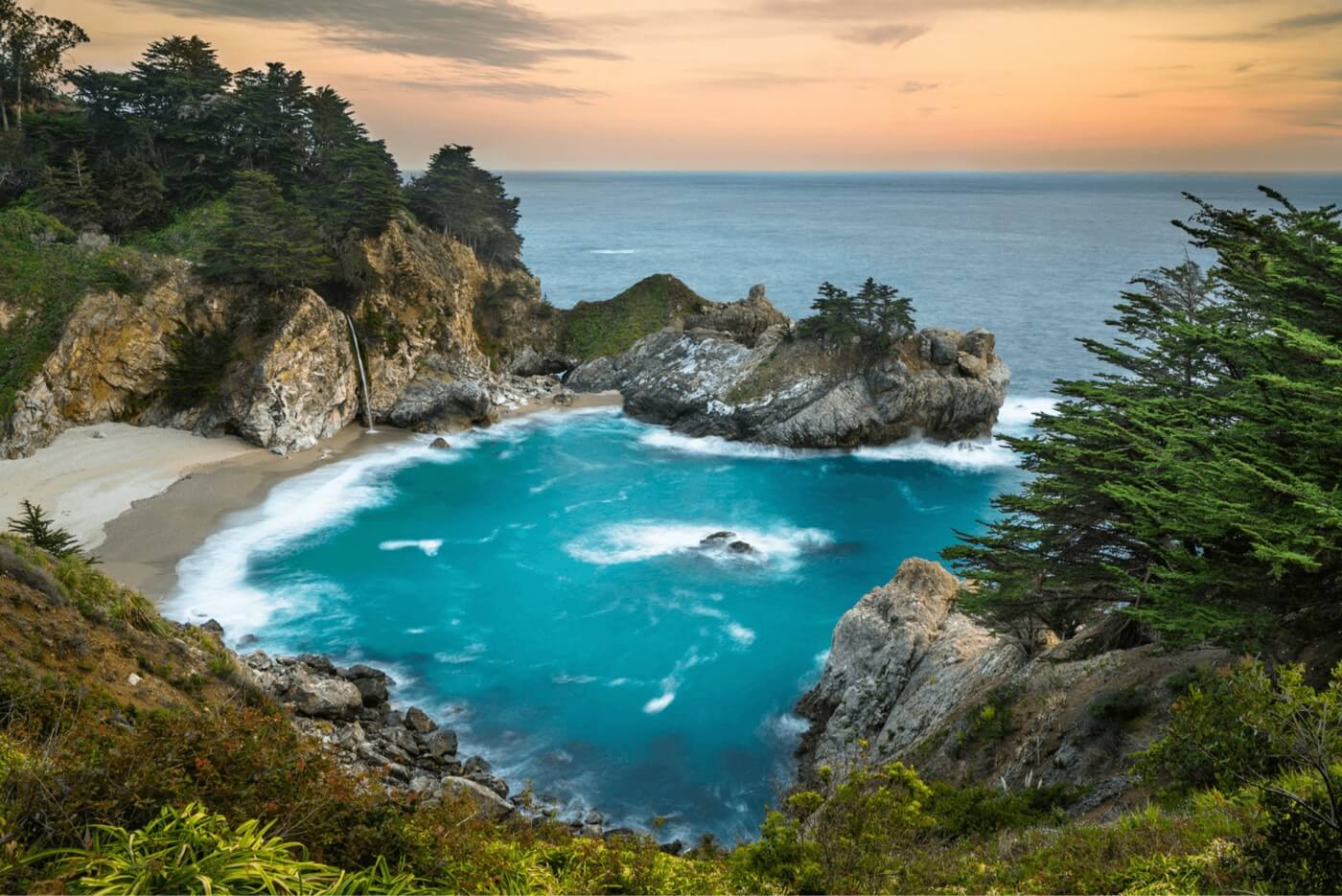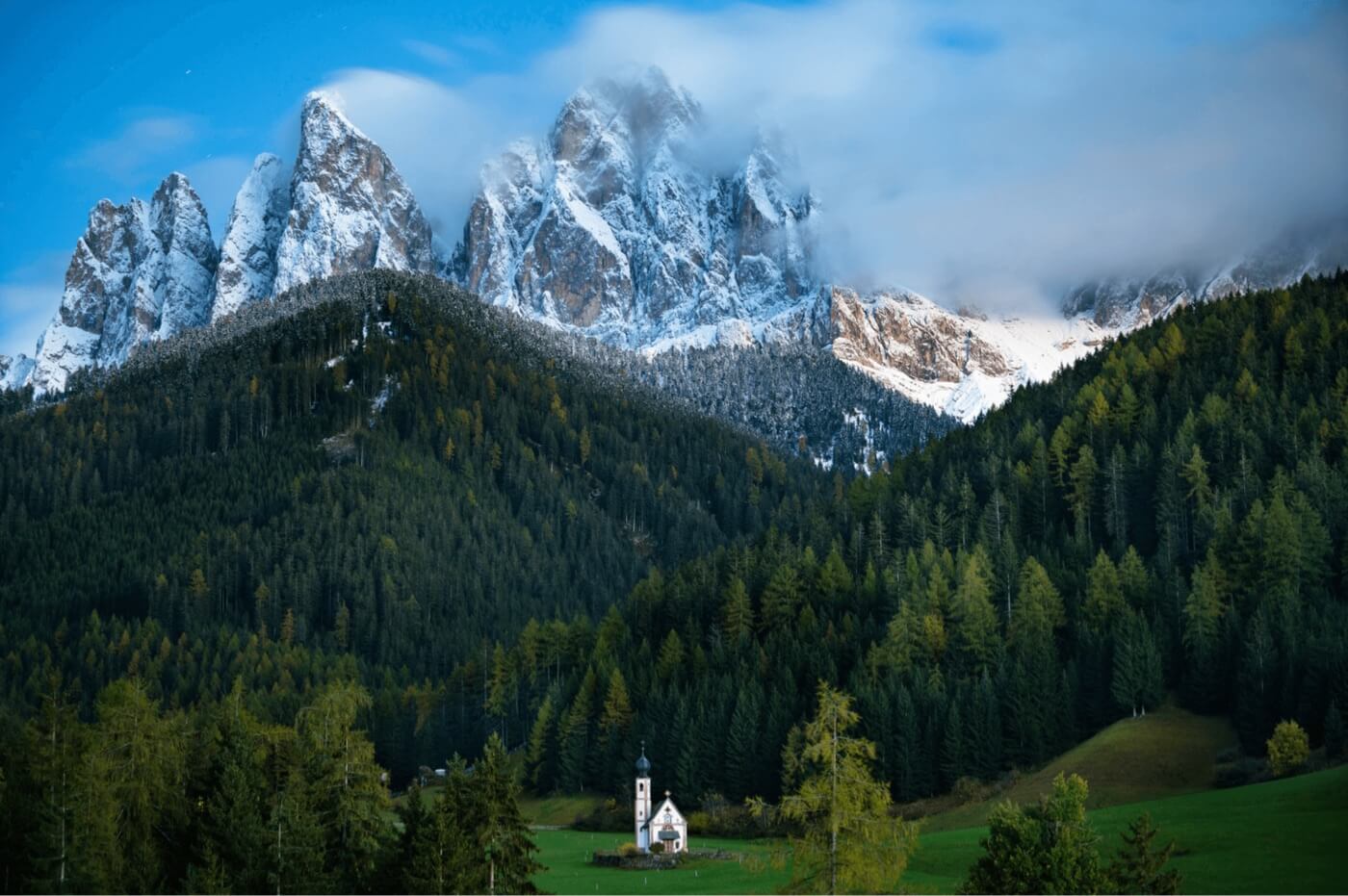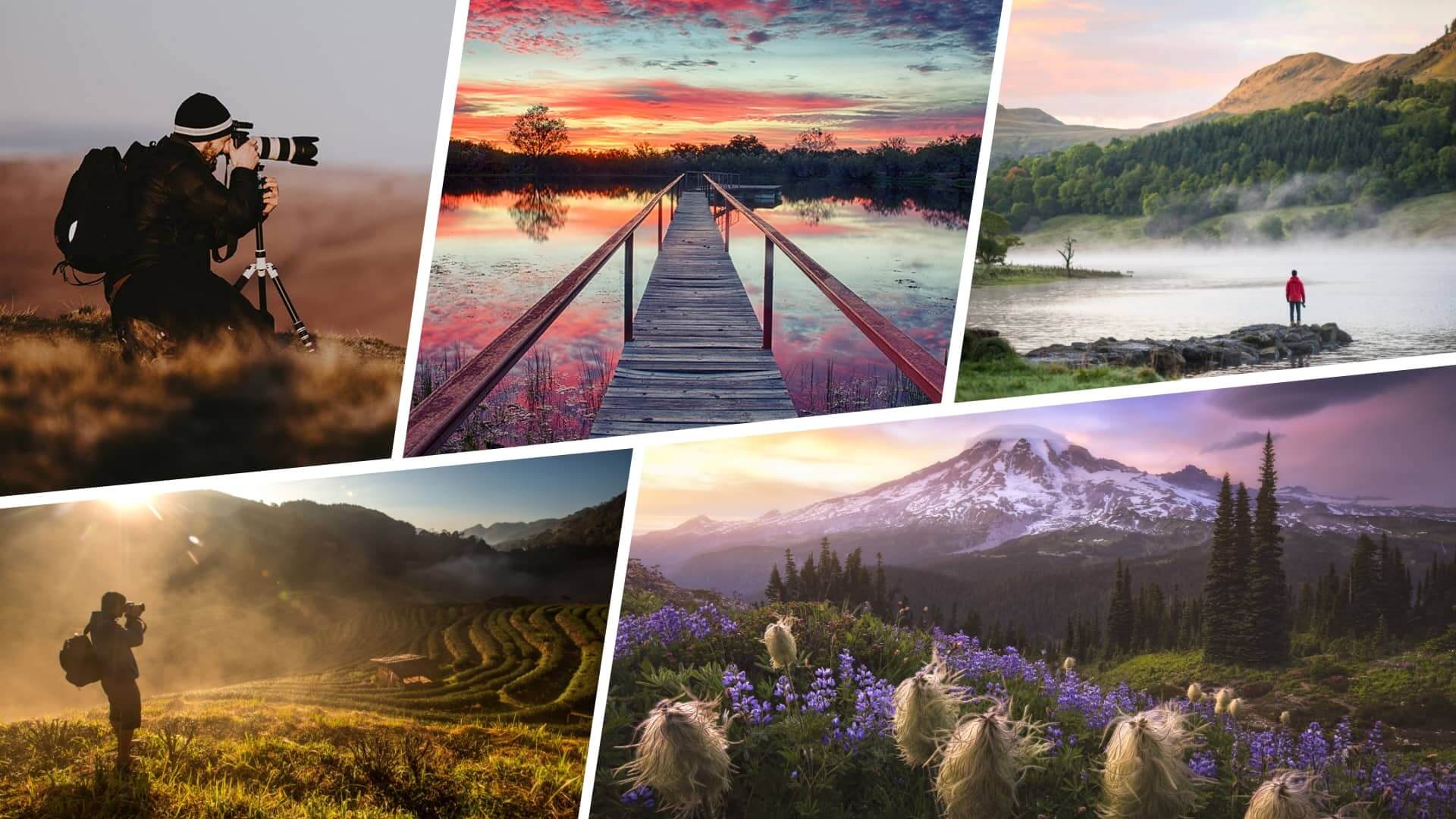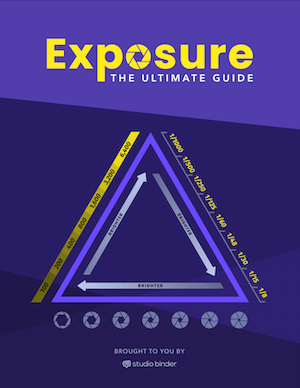Have you ever seen a shot of an iconic landscape that has taken your breath away? Nature has a unique ability to do that to us. Its scale and beauty can be something beyond the comprehension of man. So how does a photographer capture this essence with a camera? While it may appear to be a daunting task, here are the best tips to capturing the beauty of nature through landscape photography.
Best Landscape Photography Tips
1. Research the location
Just as in any shoot, pre-production is key. Doing proper research on the location of where you will be shooting will help spark your creative eye. Seeing how people have shot the location in the past may help you understand what can be done when shooting this location.
Every location also poses its own unique challenges. Whether it be hiking routes, weather patterns, or seasonal changes, all of these factors can influence your shot. Here’s a great video of some tips on how to approach planning for a landscape shoot.
5 landscape photography tips for planning your shoot
Remember, doing research will help you get an idea of what to prepare for on the day of the shoot inevitably saving you time and stress. Scouting the location can also help you find a unique perspective of iconic locations that have been overly shot.
Tips for Landscape Photography
2. Choose the right lens
Lens choice is one of the most determining decisions that influence your final shot. When choosing the right lens, it is important to think about the image you are trying to capture. For example, to capture large sweeping landscapes with great scale, a wide angle lens may be the right tool.
If you are shooting details or faraway features, a telephoto lens might be right. Here is a video of three lenses all great for landscape photography for different reasons.
3 ESSENTIAL lenses • landscape photography tips
It might be a good idea to bring multiple lenses if possible. While zoom lenses can be an incredibly versatile tool to have when shooting landscapes, prime lenses can make you focus more on composition as well as provide a wider range of aperture options, which leads us to our next tip.
How to Take Good Landscape Photos
3. Determine the aperture
In landscape photography, details can be incredibly important. Determining the right aperture to use is important and dependent on what you are capturing.
To capture the most detailed, in focus shot possible, a medium aperture of around f/5.6 - f/8 is best. The reason for this is that landscapes inherently have a range of subjects at a range of distances. Using a large aperture can cause issues with getting a consistent focus point. Here is a video with some great tips to consider when choosing which aperture to shoot at.
Aperture • How to capture landscape photography
While shooting at a medium aperture is best for both sharpness and focus, it is not the end all be all in landscape photography. If your shot has foreground elements, using a larger aperture like f/2.8 will help create depth in your shot. If your shot rack focuses, using a larger aperture for a shallower depth of field will help visually.
Tips for Landscape Photography
4. Shoot at a low ISO
Speaking of sharpness and image quality, ISO is something that should not be overlooked. Shoot at a low ISO or as close to your camera’s native ISO as possible to help reduce the amount of image noise in your shot.Best way to take landscape photos: Why you SHOULD use ISO 50
Landscape shots are typically meant to look sharp and high quality. Reducing the image noise by shooting at a low ISO is critical to capturing high quality landscape shots.
Professional Landscape Photography Tips
5. Use a tripod
In landscape photography, tripods are crucial for sharp images and solid composition. In landscape photography, tripods are something to consider over simply shooting handheld.
This is especially true if you are shooting with lower light and a slower shutter speed. To maintain all the sharpness you can in an image, a tripod is a must.

Landscape shot by Chris Burkard
Tripods will allow you to experiment with different combinations of the exposure triangle and maintain the quality and sharpness of your landscape images. For an in-depth explanation, download our free ebook — Exposure: The Ultimate Guide.
Free downloadable bonus
FREE Download
Ultimate Guide to Exposure
The Exposure Triangle is something every photographer and cinematographer needs to master. Download our FREE e-book to get in-depth explanations and tutorials on topics like aperture, ISO, shutter speed, and how to balance these settings to nail perfect exposure every time.
Best Landscape Photography Tips
6. Utilize scale
Many landscape shots can be rather stagnant especially if they are stagnant subjects such as mountains or trees. One of the best landscape photography tips that will immediately uplevel your landscape images is to utilize a subject or some reference point that can create a sense of scale.
This can create better dimension and depth in your landscape photography. It can be difficult to capture just how grandiose or massive a landscape is without a reference for scale. Keep this in mind when you find that your landscape photography falls just shy of what you are trying to achieve.

Landscape shot by Chris Burkard
Utilizing scale will also add emotion to your photography and create a better story. Subjects in relation to the grandiose landscape around them can create the sense of humility we are often overcome by when experiencing these landscapes in real life.
Shooting Landscape Photography Tips
7. Check the light and weather
Weather is an extremely important variable to keep track of when shooting landscapes. Rain, snow, and cloud coverage can really add or take away from your shots. Following the weather forecast leading up to your shoot day is important. Weather can affect not only the light of your shot, but also your ability to even shoot. Here are some great tips and apps for predicting the weather of your landscape shoot.
How to shoot landscape photos: Predicting WEATHER
In addition to the weather, tracking the sun will help you determine how light will fall in your shot. Apps like Sun Seeker and PhotoPills help you determine not only when the sun will rise and set, but also the path of the sun at your shooting location.
Professional Landscape Photography Tips
8. Shoot at golden hour
A more general rule of light for landscape photography is to shoot at golden hour. Golden hour provides the most cinematic natural light there is during the day and can make a shot more visually interesting.
5 Tips for Shooting Landscape Images At Golden Hour
As mentioned in the video, the sun’s position on the horizon at golden hour can create long dynamic shadows that can make an image interesting. When shooting at golden hour, preparation is all the more important because time will be more limited due to the sun’s position.
Lighting Landscape Photography Tips
9. Consider an ND filter
Another great tool to keep handy when shooting landscapes is the ND filter. NDs and other polarizing filters become important when shooting landscapes during the day in bright sunlight. NDs can help cut light so that you can maintain your desired aperture.
Landscape photography beginners guide: Chris Burkard's Travel Gear
ND filters can make landscape photography from DSLR cameras look incredibly cinematic. Keeping them handy for your landscape shoot will help you control your image despite lacking control of natural variables.
Best Landscape Photography Tips
10. Composition is key
Like in most of photography, composition is key. First, keep in mind the horizon. Deciding where you should set the horizon line will influence the rest of your composition. It all depends on what you want to focus on whether it be the sky or land.
When shooting landscapes, it is also important to think about how they will play in sequence. Using different perspectives shot to shot can make the sequence much more interesting and more dynamic.
Utilizing tools like drones for aerial photography can help you capture landscapes from unique perspectives. Check out some of these incredible drone shots for some inspiration for aerial perspectives.
PERSPECTIVE • AERIAL PHOTOGRAPHY
Landscape photography can result in beautiful shots. However, it can often be a daunting task due to so many variables. Following these landscape photography tips and properly planning for your landscape shoot will increase your odds at capturing beautiful landscape shots.
Remember, as with all crafts, photography takes practice. The best landscape photographers in the world have dedicated hours to their craft. So keep getting out there and keep shooting.
Up Next
Types of Camera Lenses Explained
One of the most fundamental tools at a cinematographers disposal is the camera lens. Camera lens choice can either make or break a shot. Understanding the effects and functions of different types of camera lenses is critical for every cinematographer. Check out our full guide to different types of camera lenses in our next article.
Up Next: Camera Lenses Explained →
Showcase your vision with elegant shot lists and storyboards.
Create robust and customizable shot lists. Upload images to make storyboards and slideshows.

